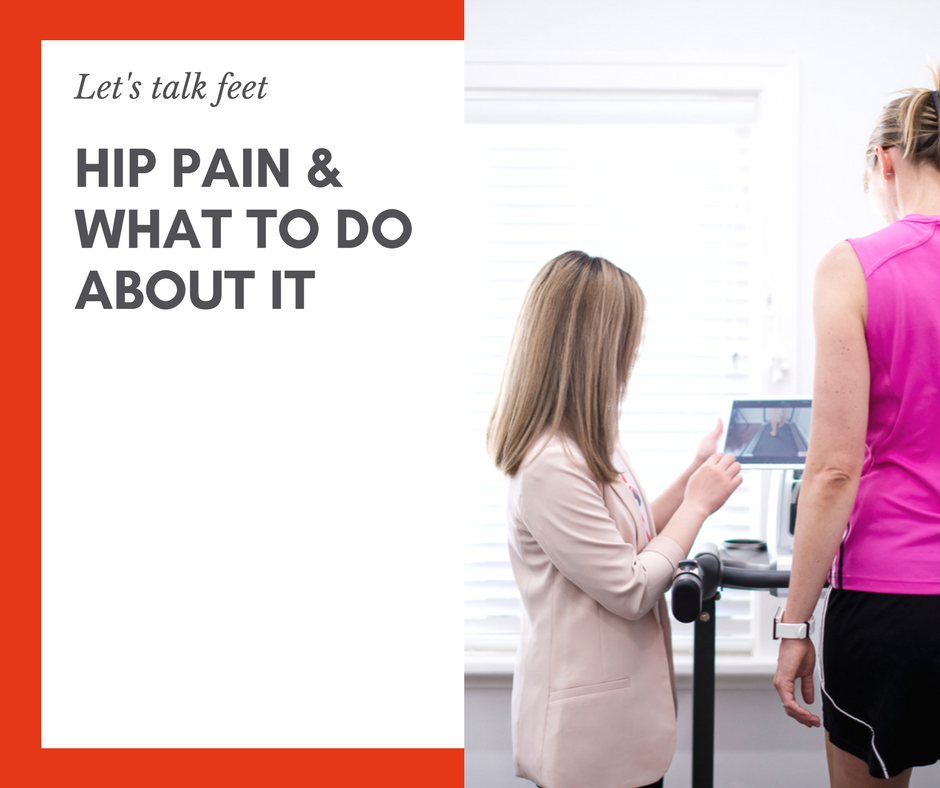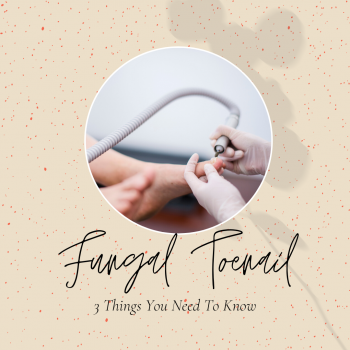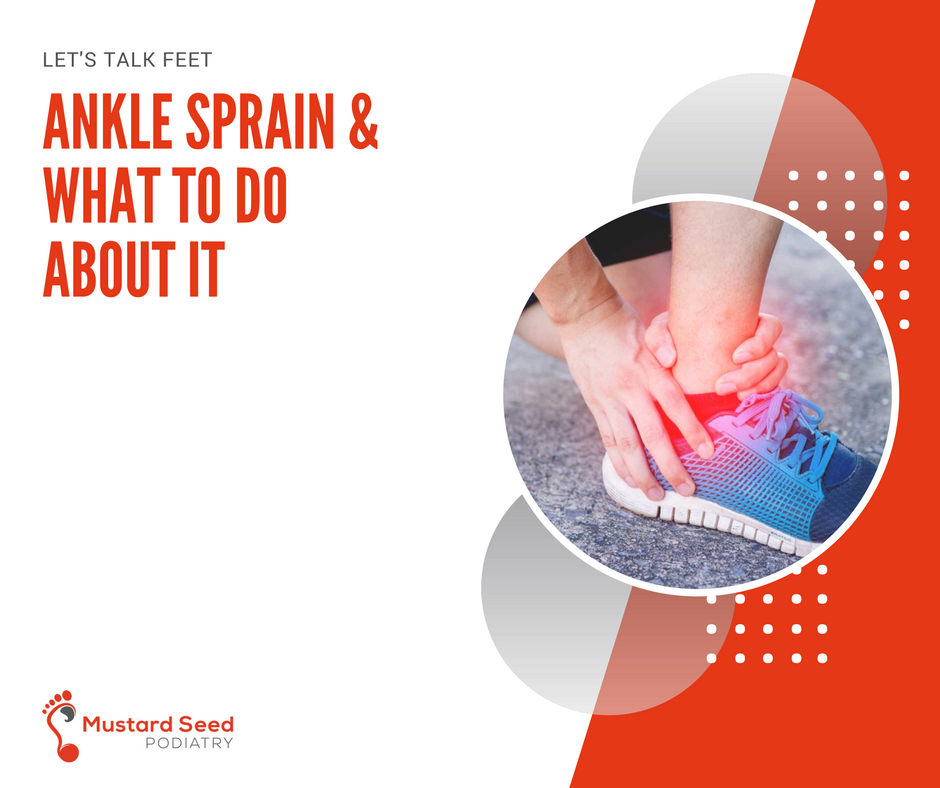Plantar fasciitis is not exactly a foreign term. Many associate it with heel pain. But, what is it? What is an effective treatment for plantar fasciitis? Before we dive into that, here’s a scenario to give you a brief idea on what living with plantar fasciitis looks like…
Your alarm rings. You wake up, put your feet down on the floor, stand up, and OUCH! WHAT WAS THAT? It feels like shattered glass stabbed your heels. That pain is sharp. You move on and start going about your day.
Somehow, your heels got better.
A few hours go by, but you fear for yourself what would happen later the day – that sharp pain would come back. And, without fail, each time you stand up from a chair, there is shattered glass right under your heels.
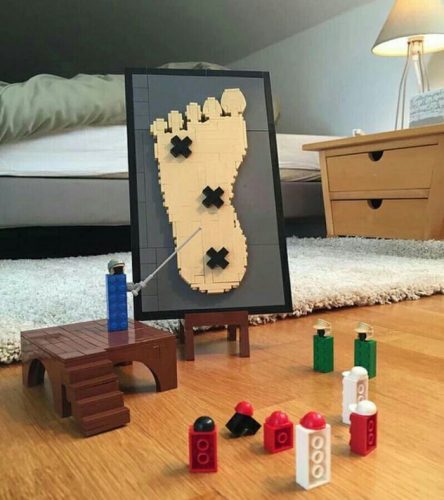
What is Plantar Fasciitis?
Plantar fasciitis, also known as plantar fasciopathy, is the inflammation and degeneration of the plantar fascia. Unless there is direct trauma to the heel (e.g. jumping off from a high platform), plantar fasciitis is mostly a form of overuse injury. The condition starts when small tears occur in the plantar fascia. As the body tries to repair the tears, inflammation takes place. That forms the acute stage of the condition. As the condition progresses without intervention, degeneration of the plantar fascia begins.
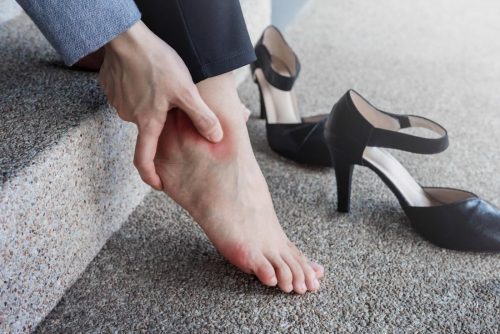
Regardless of how you call it – plantar fasciitis or plantar fasciopathy, the condition causes debilitating, excruciating heel pain. The pain is often localised, being at the centre of the bottom of the heel. A classic symptom is sharp heel pain first thing in the morning, or after a period of inactivity. The interesting thing about plantar fasciitis is that the pain often improves (seemingly, at least) after some moving around. However, as the condition progress, pain can become persistent and you find it very challenging to get some kind of relief.
What causes Plantar Fasciitis?
The plantar fascia is a thick and long band of ligament that runs from the bottom of the heel to the toes. The function of the plantar fascia is to act as a spring to create propulsion to push the foot forward during gait.
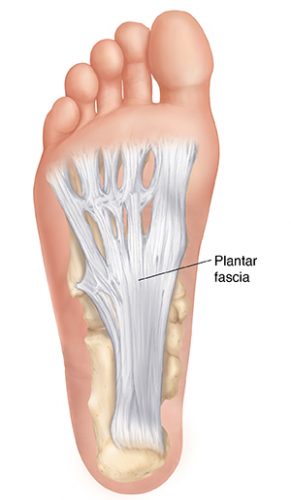
Degeneration of the plantar fascia happens when damage is faster than healing of the ligament. That is actually a universal rule for all soft tissues in our body – when healing is faster than damage, no problem, all is good; when damage is faster than healing, however, pain happens.

Poor Footwear
Poor footwear is one of the main causes of plantar fasciitis. Shoes with a thin sole, for example, lack cushioning for the heels. As we age, the natural fat pad under the heel wears out. We then become more dependent on our shoes to cushion our bony heel. But, when our shoes don’t provide adequate cushioning, we are essentially pounding our heel against the ground, which is often very hard, each time we take a step. Over time, it is easy to imagine why there would be damage and degeneration of the plantar fascia.
Another thing about bad shoes is that they can sometimes be too soft and are unable to provide our feet with proper support. Flexible shoes may seem comfortable to wear, but the more flexible the shoes are, the harder our feet will need to work. Overworking the feet can lead to wearing out of the plantar fascia, resulting in the dreaded plantar fasciitis.

And, do we need to mention high heels?
Poor Foot Biomechanics
Another common cause of plantar fasciitis is poor foot biomechanics. Biomechanics is the science of movement – how muscles, ligaments, and joints work in relation to each other. Contributing factors of poor foot biomechanics include over-pronation/supination, plantar arch collapse, reduced range of movement in joints, ligament laxity (hyper-flxibility of joints), and instability of the feet. These factors can happen in isolation, but more often than not, multiple factors occur simultaneously. This is why plantar fasciitis can be very complicated.

The Complexity of Plantar Fasciitis (Fasciopathy)
The complexity of this degenerative heel condition lies in the fact it is multifactorial. The complexity is also compounded by the lengthy healing time of the plantar fascia. Add chronicity to the equation, and the already-complicated condition goes to the next level. Any pain that is present for more than 3 months is considered chronic. Chronic pain can alter neuropathways in our brain to normalise unattended body signals (pain is a signal from our body that something is wrong).

While you can still feel the pain, it doesn’t seem so foreign to you anymore. Somehow, you can’t even remember what it is like to not have the heel pain, so you accept it to be the way it is and leave it for another day. It is not uncommon for us to hear clients that have a 10 years history of plantar fasciitis. And, that is why.
So, is there an effective treatment for plantar fasciitis?
What Can Be Done About It
Fundamentally, an effective treatment for plantar fasciitis should have a two-way approach – symptomatic and preventative. The symptomatic approach, as the name suggests, deals with the symptoms of the condition – the heel pain, the inability to walk properly.
Physical therapies, including percussion therapy (which is a high intensity massage), electric muscle stimulation (EMS), and low level laser therapy, are effective in providing symptomatic relief. However, how long the relief lasts varies from person to person. It is usually the most effective when at least 2 treatments are done within a week.

Like we mentioned before, when healing is faster than damage, the tissue heals and the pain goes away. This underlies our preventative approach to the treatment for plantar fasciitis. Our philosophy is always to help our patients get long term results, so they can regain the ability to do move about freely. The preventative approach looks at more fundamental things, like footwear and orthotics.

Without good footwear, there really is not much use in wearing orthotics. Both the footwear and orthotics work synergistically to off-load abnormal pressures under the foot, correct lower limb alignment, and improve foot biomechanics.
Does that mean you can never wear nice shoes again? We never say never. It is a good idea to stick to one to two pairs of supportive shoes and orthotics while you are going through the active treatment stage. Once your pain is gone, we trust that you can make better footwear choices and choose the right shoes for the right occasions. There is definitely still room for nice shoes!
Final Thoughts
Plantar fasciitis is a very common condition affecting the heels due to the degeneration of the plantar fascia. The condition can be multifactorial and complex in nature. However, it is treatable, and should be treated as soon as you suspect you have it. The longer you leave it, the more complicated the condition would become.
What often makes an effective treatment for plantar fasciitis effective is as much your podiatrist’s input as yours. Just remember, there are no magic pills to heal the heel, and, ultimately you are the one that makes the decision to, or not to, do something.
We hope you have enjoyed reading this article and learned a few things about plantar fasciitis and the treatment for it. If you need help with your heel(s), or know someone who does, get in touch with us today!


